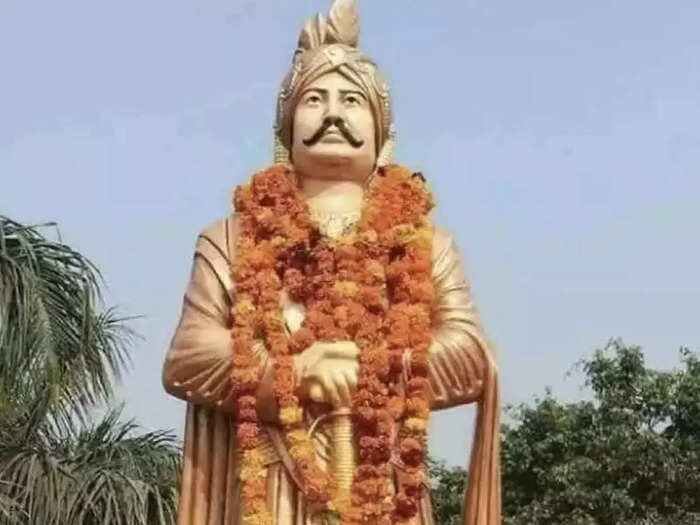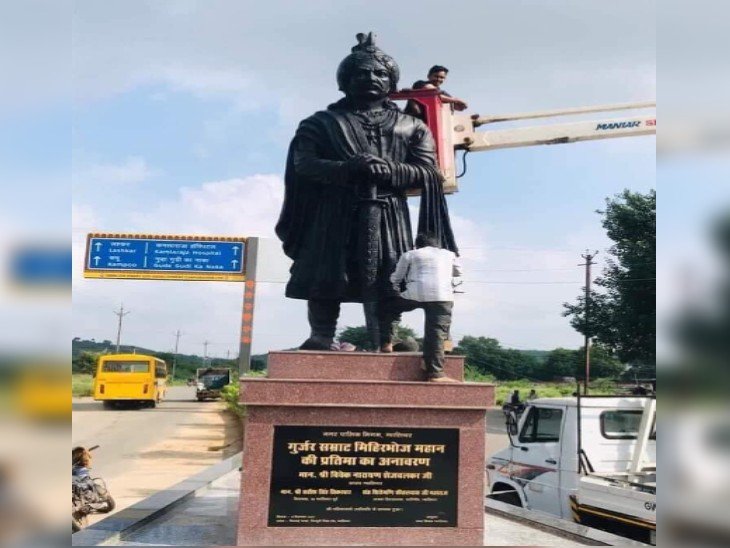
Mihir Bhoj of the Gurjara-Pratihara dynasty was India’s outstanding political figure in the ninth century. He is ranked with Dhruva Dharavarsha and Dharmapala as a great general and empire builder. Mihir Bhoj succeeded his father Ramabhadra. At that time, the prestige of the royal family had lowered due to the reverses and defeats suffered by Ramabhadra.
Mihir Bhoj (reigned 836–885 AD), therefore, needed to first consolidate his position after taking over as the ruler. He crushed the rebellious feudatories in Rajasthan and gradually rebuilt the empire by conquest of territories in Rajputana, Gujarat and Madhya Pradesh. But his plans to extend the kingdom were thwarted by the Palas of Bengal and the Rastrakutas of Gujarat.
During the time of Mihir Bhoj, Bengal was ruled by King Devapala (810–850), who is reputed to have eradicated the race of the Utkalas, humbled the pride of the Hunas and scattered the conceit of the Dravidas and Pratiharas, says the Badal Inscription. Mihir Bhoj invaded Bengal but was defeated by Devapala.
Mihir Bhoj then launched a campaign against the territories to the south of his empire. He conquered Malwa, Deccan and Gujarat. In Gujarat, he participated in a war of succession between Dhruva II and his younger brother of the Rashtrakuta dynasty. Mihir Bhoj led a cavalry raid into Gujarat against Dhruva in support of his younger brother. However, the raid was repulsed, but Mihir Bhoj was able to retain dominion over parts of Gujarat and Malwa.
The Pratiharas were defeated in large battle in Ujjain by the Rastrakutas. However, retribution followed on the part of the Pratiharas and by the end of his reign, Mihir Bhoj had successfully destroyed the Rashtrakuta dynasty.
Large kingdom
At its height, Mihir Bhoj’s empire extended from the foothills of the Himalayas in the north to the Narmada River in the south, the Sutlej River in the northwest, and up to Bengal in the east. It included Etawah in today’s Uttar Pradesh. His capital was Kannauj, which was referred to as Panchala.
Mihir Bhoj’s feudatory, the Guhilas chief named Harsha of Chatsu, is described as defeating the northern rulers with the help of the mighty elephant force, and loyally presenting to Mihir Bhoj the special Shrivamsha breed of horses, which could easily cross seas of sand.
Besides being a conqueror, Mihir Bhoj was a great diplomat. The kingdoms that were conquered and acknowledged his suzerainty included Travani, Valla, Mada, Arya, Gujaratra, Lata Parvarta and Chandelas of Bundelkhand.

Mihir Bhoj’s Daulatpura-Dausa inscription (843 AD) confirms his rule in the Dausa region. Another inscription states, “Bhoj’s territories extended to the east of the Sutlej River.” Kalhana’s Rajatarangini states that the territories of Mihir Bhoj extended to Kashmir in the north, and Mihir Bhoj conquered Punjab by defeating the ruling Thakkiyaka dynasty.
After Devapala’s death, Mihir Bhoj defeated the Pala King Narayanapala and expanded his boundaries eastward into Pala-held territories near Gorakhpur.
Mihir Bhoj was a devotee of Vishnu. He adopted the title of Ādivarāha, which is inscribed on some of his coins. His epithet was Srimad-Adivaraha
Mihir Bhoj was a bitter enemy of the Arab invaders. According to Arab chronicler Sulaiman, Mihir Bhoj maintained a large army and had a fine cavalry. Hudud-ul-Alam, a tenth-century Persian geographic text, states that most of the kings of India acknowledged the supremacy of the powerful ‘Rai of Qinnauj’ (Kannauj) whose mighty army had 150,000 strong cavalry and 800 war elephants.
Mihir Bhoj’s son Mahendrapal (890–910) expanded further eastwards in Magadha, Bengal and Assam. Under Mihir Bhoj and Mahendrapal, the Pratihara empire reached its peak of prosperity and power.
Srimad-Adivaraha
Mihir Bhoj was a devotee of Vishnu. He adopted the title of Ādivarāha, which is inscribed on some of his coins. His epithet was Srimad-Adivaraha. There is a broad agreement among scholars on the attribution of adivaraha dramma billon coins to him.
These coins have a depiction of Adivaraha on the obverse. On the obverse along with the deity Adivaraha, on his right, there is a solar wheel with spokes and on the left are other emblems such as mace, lotus flower and conch shell. Under the feet of the deity is probably a two-headed serpent.
According to Alexander Cunningham, these types of coins are only found in silver and copper. It is suggested that copper coins were originally coated with silver to circulate as silver coins.















